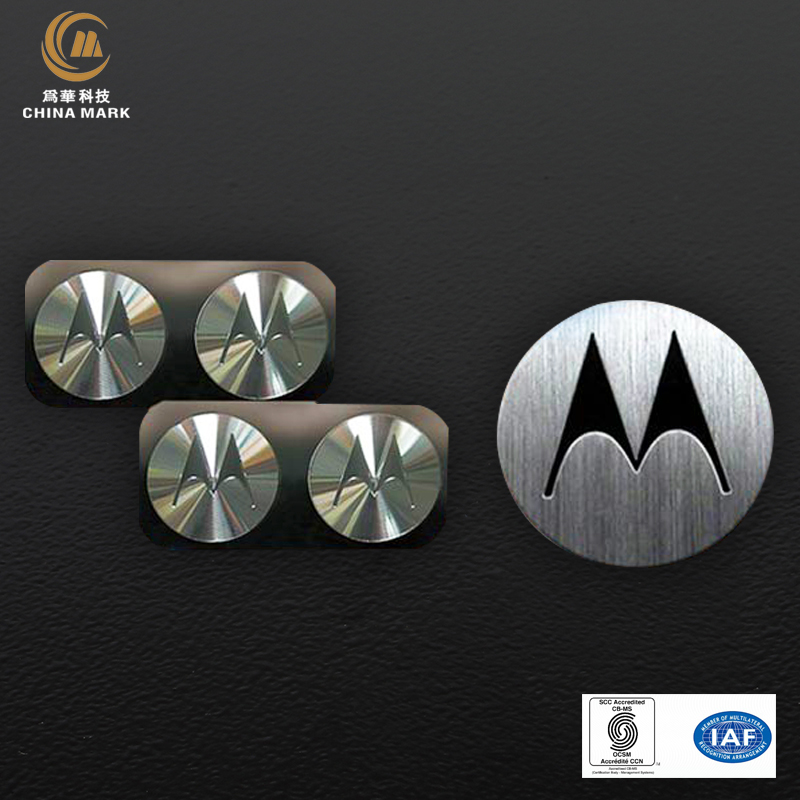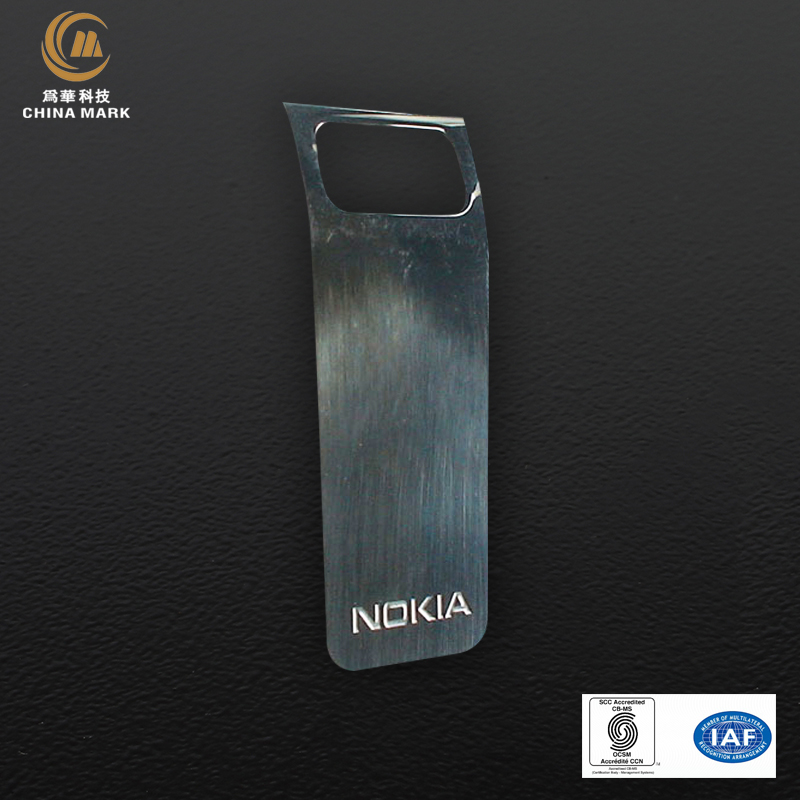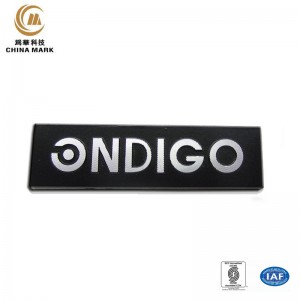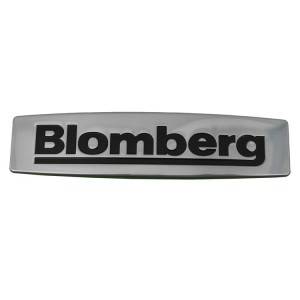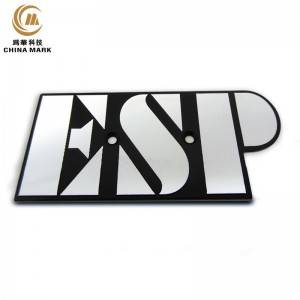When we see the exquisite customized nameplates, we will find that there are multiple processes. The Etched Nameplates are very delicate and beautiful, but do you know what to pay attention to during the etching process? As a company focusing on custom metal nameplates, Weihua Technology shares some etching issues in the process of Etched Nameplates and Etched Logos.
1. Reduce undercutting and protruding edges in the process of Etched Nameplates and Etched Logos, and increase the etching coefficient
Side erosion produces a sharp edge. Generally, the longer the printed board is in the etching solution, the more serious the side etching. Undercutting seriously affects the accuracy of printed wires, and severe undercutting will make it impossible to make fine wires. When the undercut and the edge are reduced, the etching coefficient increases. A high etching coefficient indicates the ability to maintain thin wires and make the etched wires close to the size of the original image. Whether the electroplating etching resists is tin-lead alloy, tin, tin-nickel alloy, or nickel, the excessive overhang will cause the wire to short circuit. Because the protruding edge is easily broken, an electrical bridge is formed between the two points of the wire.
There are many factors that affect undercutting, some points are summarized below:
1) Etching method: soaking and bubbling etching will cause larger side etching, splash and spray etching are small, especially spray etching effect.
2) The type of etching solution: different etching solutions have different chemical components, and their etching rates are different, and the etching coefficients are also different. For example, the etching coefficient of an acidic copper chloride etching solution is usually 3, and the etching coefficient of an alkaline copper chloride etching solution can reach 4. Recent studies have shown that an etching system based on nitric acid can achieve almost no side etching, and the sidewalls of the etched lines are nearly vertical. This etching system is yet to be developed.
3) Etching rate: A slow etching rate will cause severe undercutting. The improvement of the etching quality has a great relationship with the acceleration of the etching rate. The faster the etching speed, the shorter the time the board stays in the etching solution, the smaller the amount of side etching and the etched patterns are clear and neat.
4) The pH value of the etching solution: when the pH value of the alkaline etching solution is higher, the side etching increases. In order to reduce side corrosion, the PH value should be controlled below 8.5 in general.
5) Density of etching solution: Too low density of alkaline etching solution will aggravate side etching, see Figure 10-4. Choosing an etching solution with a high copper concentration is beneficial to reduce side etching.
6) Copper foil thickness: To achieve the etching of thin wires with small side etching, (ultra) thin copper foil is used. And the thinner the line width, the thinner the copper foil thickness should be. Because the thinner the copper foil, the shorter the time in the etching solution, the smaller the amount of side etching.
2. Improve the consistency of the etching rate between the board and the board in the process of Etched Nameplates and Etched Logos
In continuous board etching, the more consistent the etching rate, the more uniformly etched boards can be obtained. To meet this requirement, it is necessary to ensure that the etching solution is always kept in the etching state during the entire etching process. This requires the selection of an etching solution that is easy to regenerate and compensate, and the etching rate is easy to control. Select technology and equipment that can provide constant operating conditions and can automatically control various solution parameters. It is achieved by controlling the amount of copper dissolved, the pH value, the concentration of the solution, the temperature, and the uniformity of the solution flow (spray system or nozzle and nozzle swing).
3. In the process of etching nameplates and etching signs, the uniformity of the etching rate of the entire board surface is high
The etching uniformity of the upper and lower sides of the board and each part on the board surface is determined by the uniformity of the etchant flow rate on the surface of the board. During the etching process, the etching rates of the upper and lower plates are often inconsistent. Generally speaking, the etching rate of the lower plate surface is higher than that of the upper plate surface. Because of the accumulation of solution on the upper plate surface, the etching reaction is weakened. The uneven etching of the upper and lower plates can be solved by adjusting the spray pressure of the upper and lower nozzles. A common problem of etching printed boards is that it is difficult to etch all the surfaces of the board at the same time. The edge of the board is etched faster than the center of the board. Using a spray system and swinging the nozzle is an effective measure. A further improvement can be achieved by making the spray pressure at the center and the edge of the board different, and etching the front and back of the board intermittently to achieve uniformity of the etching on the entire board.
4. Improve the ability to safely handle and etch thin copper foil and thin laminate during the process of Etched Nameplates and Etched Logos
When etching a thin laminate such as the inner layer of a multilayer board, the board is easily wound on the rollers and transfer wheels, resulting in waste. Therefore, the equipment for etching the inner layer board must ensure that it can handle the thin laminate board smoothly and reliably. Many equipment manufacturers add gears or rollers to the etching machine to prevent this phenomenon from happening. A better method is to use additional swaying PTFE coated wire as a support for the transfer of thin laminates. For the etching of thin copper foil (such as 1/2 or 1/4 ounce), it must be ensured that it is not scratched or scratched. Thin copper foil cannot withstand the mechanical disadvantages of etching 1 ounce of copper foil, and sometimes severe vibrations may scratch the copper foil.
5. Reduce pollution problems in the process of Etched Nameplates and Etched Logos
Water pollution by copper is a common problem in the production of printed circuits, and the use of ammonia-alkali etching solutions makes this problem even more serious. Because copper is complexed with ammonia, it is not easy to remove it by ion exchange or alkaline precipitation. Therefore, the second spraying operation method is used to rinse the board with a copper-free additive solution, which greatly reduces the amount of copper discharged. Then, an air knife is used to remove the excess solution on the board before the water rinsing, thereby reducing the rinsing burden of the water on the copper and etched salts.
These are the main details that we usually need to strictly customize in the process of customizing beautiful Etched Nameplates and Etched Logos. If you need custom metal nameplates, metal signs, you can contact us no matter what the problem is, because we are a professional Chinese manufacturer of metal signs, metal signs, custom metal logos, commodity signs, house plates, etc. E-mail: wh@chinamark.com.cn, whsd08@chinamark.com.cn or phone: (0086)-752-5319901, Sales: (+86)19926691505
Searches related to aluminum logo:
Post time: Jun-11-2021

